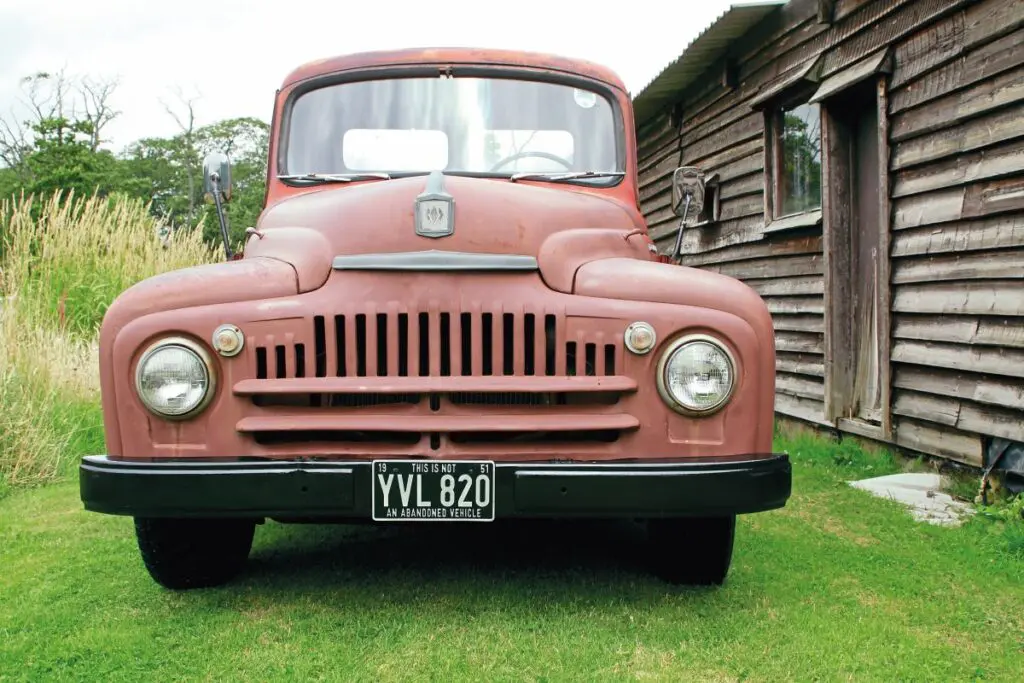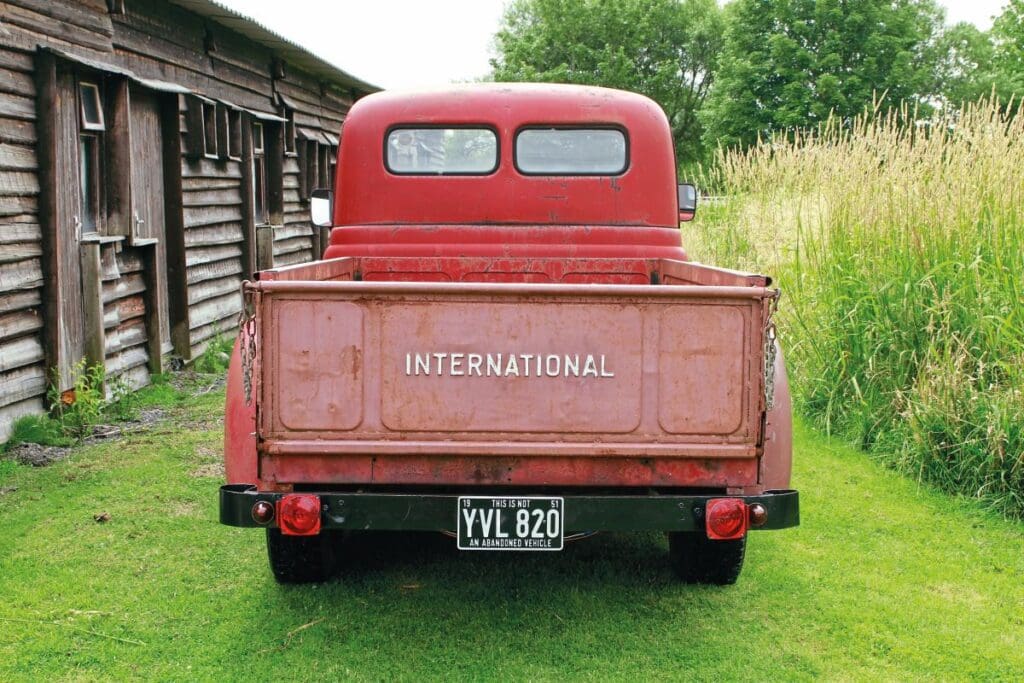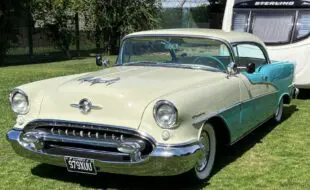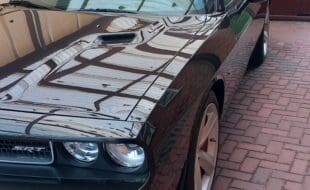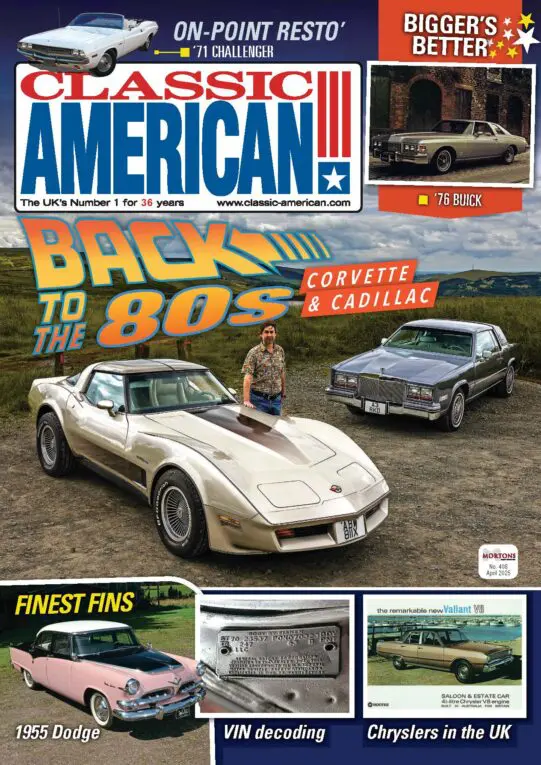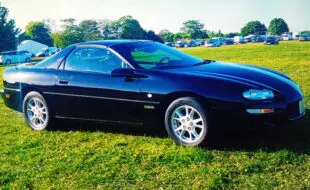Paul Mimmack is in the habit of driving rare muscle cars, but he woke up one day fancying a pick-up. Always preferring the lesser-seen and unusual, he ended up importing this finely aged International, and pick-ups don’t come much rarer than that.
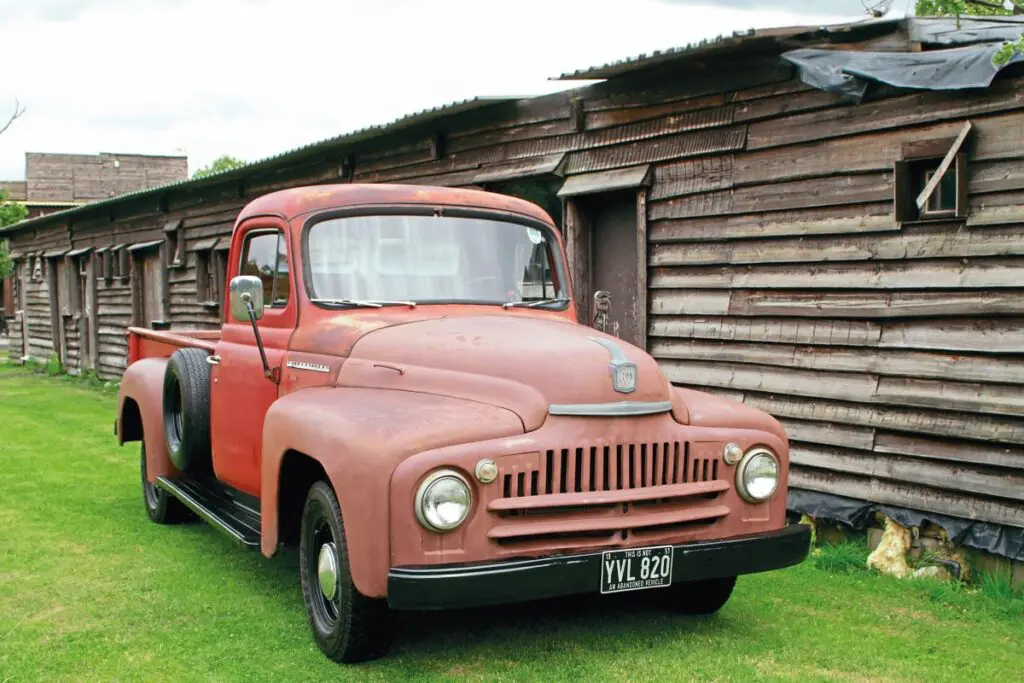
Words and photography: Zack Stiling
Four Oldsmobile 442s, a 440 six-pack, four-speed Plymouth Superbird, ’55 Chevy two-door, ’61 Thunderbird, ’68 Torino Fastback 390 GT four-speed, ’69 Road Runner, ’69 Charger 440 R/T, ’69 Mustang 390 GT four-speed, assorted Corvettes, Camaros and Firebirds… The list reads like an excerpt from a particularly optimistic letter to Father Christmas, but for Paul Mimmack, they’re just a fraction of the cars he’s had the considerable pleasure of owning. He’s been fortunate, for his father is John Mimmack, whose name might ring a bell with some readers in the north-west as the proprietor of John Mimmack USA Cars Ltd in Blackpool.
Enjoy more Classic American reading in the monthly magazine.
Click here to subscribe & save.
Paul says “I’ve grown up with American cars. My dad dealt in them from 1966, so I was around them from a few years old. There were a lot of the older muscle cars, which is what I’ve always liked. My dad owned virtually everything that’s desirable now. He had all the top-line muscle stuff, when it was more affordable and more available. He covered a wide spectrum; he’d have anything from a Ford Pinto to a Shelby GT500, a Dodge Charger, a Chevy van or a limo.” Indeed, a 1970 GT500 is among Paul’s old cars; he co-owned it with his father.
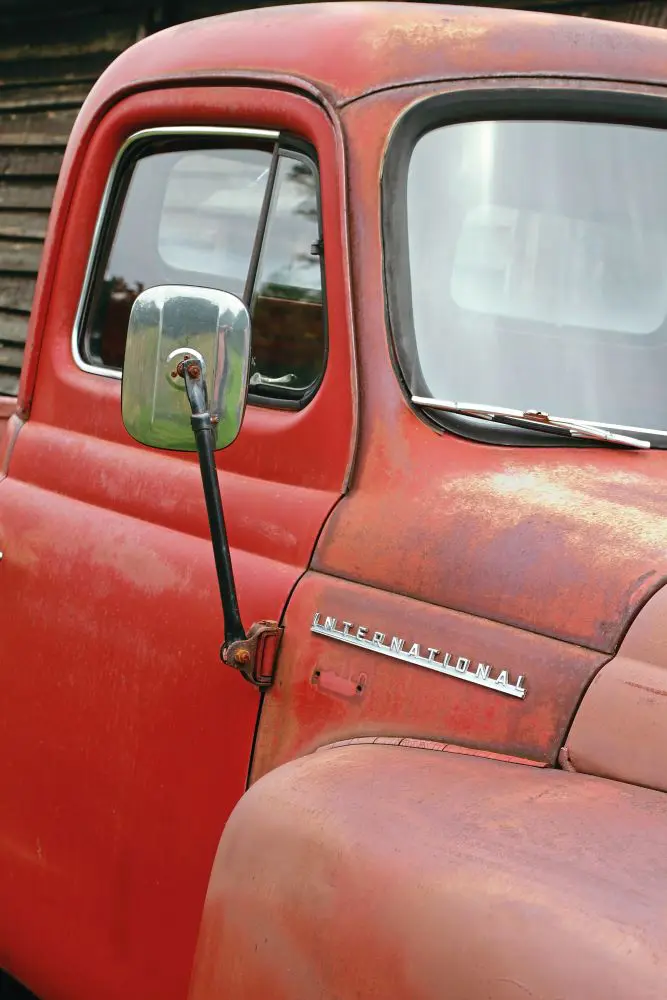
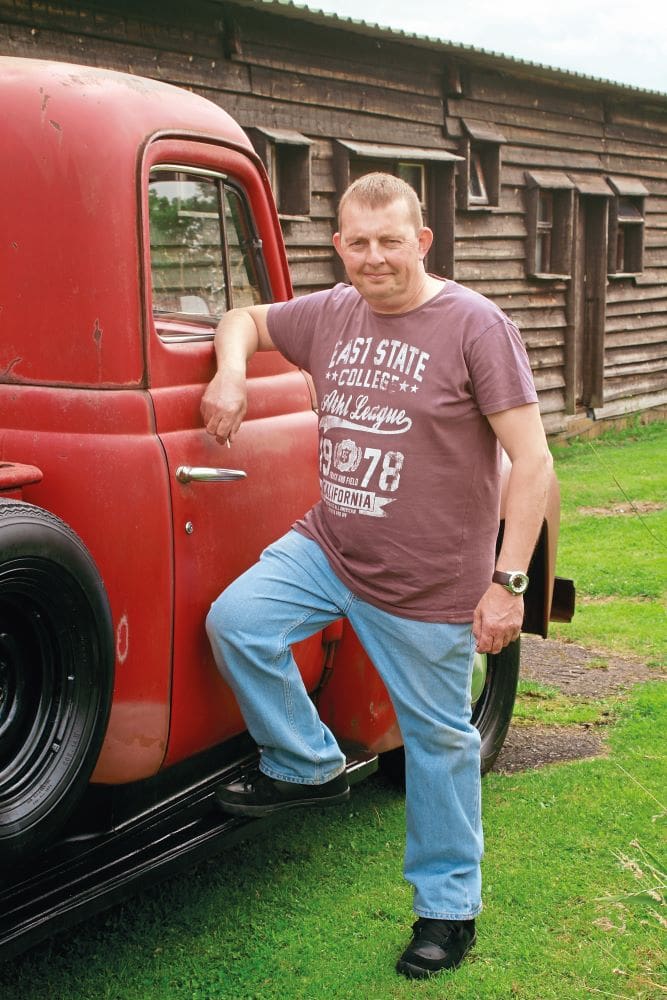
“I remember going on a trip when I was 10 or 12 years old. We went down to Hereford via country roads and picked up a Ram Air 1969 Pontiac GTO Judge. For a young lad to be in a car like that… it was bright as the sun in its Carousel Red paint, with the sound from those trumpet exhausts. He (my father) liked older muscle cars especially, so he went out of his way to buy them. He’s still interested – he’s 85 now and he’s not currently got one, but he’s looking!”
Of course, Paul had his mind set on owning an American car from a very early age, and he achieved it when he was 18. “I was working for Ford at the time, but I took some holiday and travelled with my dad to Belgium, Holland and Norway, buying vehicles on the way, and I bought my first car, a six-cylinder 1970 Chevrolet Camaro; I think it was under £400 at the time. I couldn’t tell you how many I’ve had now…”
His present stable comprises some five cars, and the muscle car theme is still very pronounced. There’s the ’68 Olds 442 which he’s owned for 16 years, two ‘modern classics’, a 2007 Shelby Mustang GT500 and 2012 Mustang Boss 302, and something truly extraordinary: an original 1968 Ford Torino GT Indianapolis pace car, still in its original paint and with the plastic on its seats, which carried several celebrity drivers and was used to run film crews to and from the circuit. That car, however, is in the throes of recommissioning, and the vehicle we’re looking at now is a world apart from all Paul’s usual fancies.
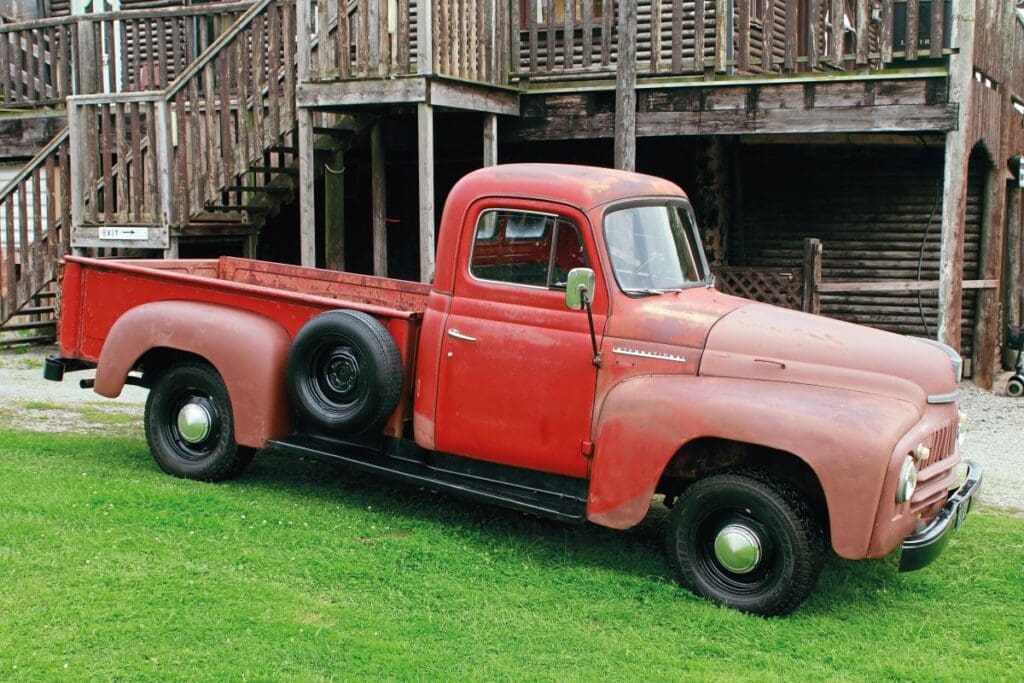
It’s a 1951 International L-112 pick-up, and while pick-ups have a strong following over here, Internationals seem to have been completely overlooked. There are Fords and Chevys aplenty, and every now and then you’ll see a Studebaker or Dodge, but Internationals like Paul’s are very seldom seen, probably existing only in single figures in Britain. Of course, apart from the 1952-onward Travelall wagon, International Harvester never made passenger cars, only trucks and tractors, so it’s not surprising if car enthusiasts forget them.
If, however, you encounter an historic International today, it’s anything but forgettable considering how rare they are, and that rarity was all part of the attraction for Paul. “I fancied an old patina’d truck, and I got this partly because of my dad. He said: ‘Why don’t you look at Internationals because you don’t see many and they strike me as good value.’ They were good hard-working trucks, and everyone sees Fords and Chevrolets, but I like something different that not many people might have. I like the fact that, for this model, they made it with twin rear windows, which gives it a bit of character. They lasted up to about 1954, then they changed to the bigger single back window which looked more modern but had less character.”
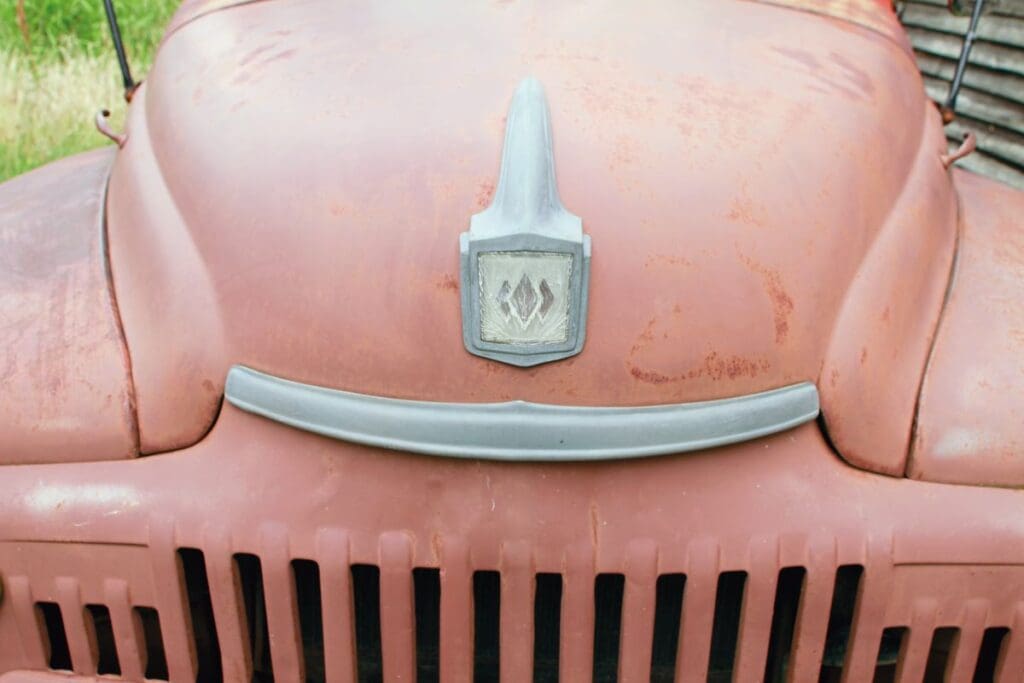

Love at first Sight?
The truck didn’t come with any history, but it was in Columbus, Ohio, when Paul saw it advertised. “A guy had bought it and was thinking of rat-rodding it,” he remembers. “He’d started to do some work on the body and repaired some small areas with metal, and then decided it was too straight and unmolested, so he thought he’d buy something which it wasn’t as crucial to preserve. The guy told me he’d rebuilt certain things and done work to the brakes. It had been converted to 12-volts so it’s got an alternator now.”
Internationals are generally unfamiliar territory, even to some of the most knowledgeable American car enthusiasts, so the disparity between the L-110 badging and the actual L-112 model designation deserves some explanation. Simply, the ½-ton L-110 was the smallest model in the L-series, which was International’s all-new multi-purpose truck line for 1950. Low and wide, it was a radical and a much more modern departure from the upright old trucks of the Forties. It was produced until 1952. With a facelift, it continued into 1953 as the R-series. The L-112 was the heaviest-duty variant of the L-110 series, with beefier springs and shock absorbers, but International never went to the trouble of having different badges cast, which made sense if one considers that, between the L-110 and humongous L-200 and L210 ranges, the L-series contained some 66 different models. The early Fifties was an interesting time for International Harvester when sales were high, but profits were not, and although it produced 175,000 vehicles in 1951, much of that number would have been vehicles of a more specialised nature than light pick-ups.
Mechanically, it’s all very simple, rugged and conventional for its era, with an overhead-valve straight-six and four-speed non-synchromesh gearbox. The 220cu in Silver Diamond engine was used across the whole L-series line and produced in the region of 100bhp. Paul’s truck is even something of a deluxe model; the L-110 offered only two optional extras, a heater and a passenger sun visor, and it came with both. The only noticeable deviation from originality is the wheels which have been fitted with adapter plates. Paul thinks they’re late Fifties Mopar items.
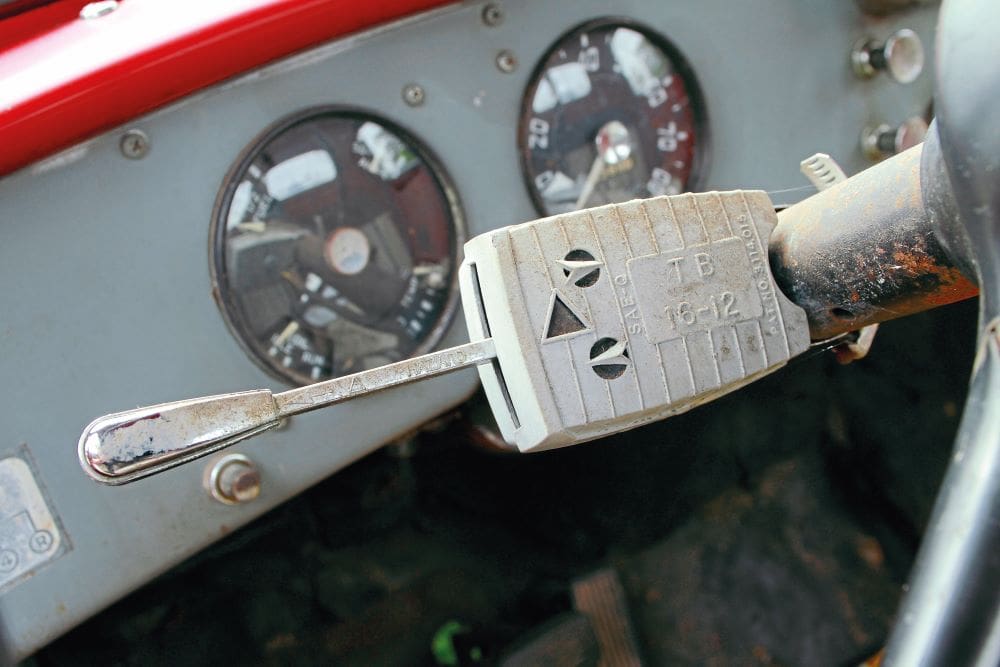
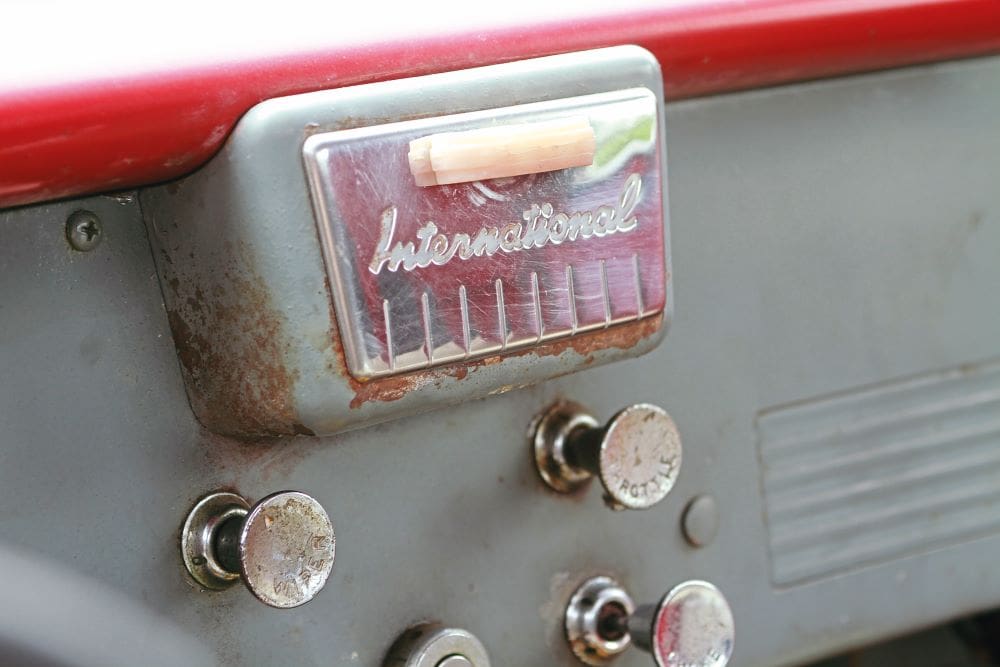
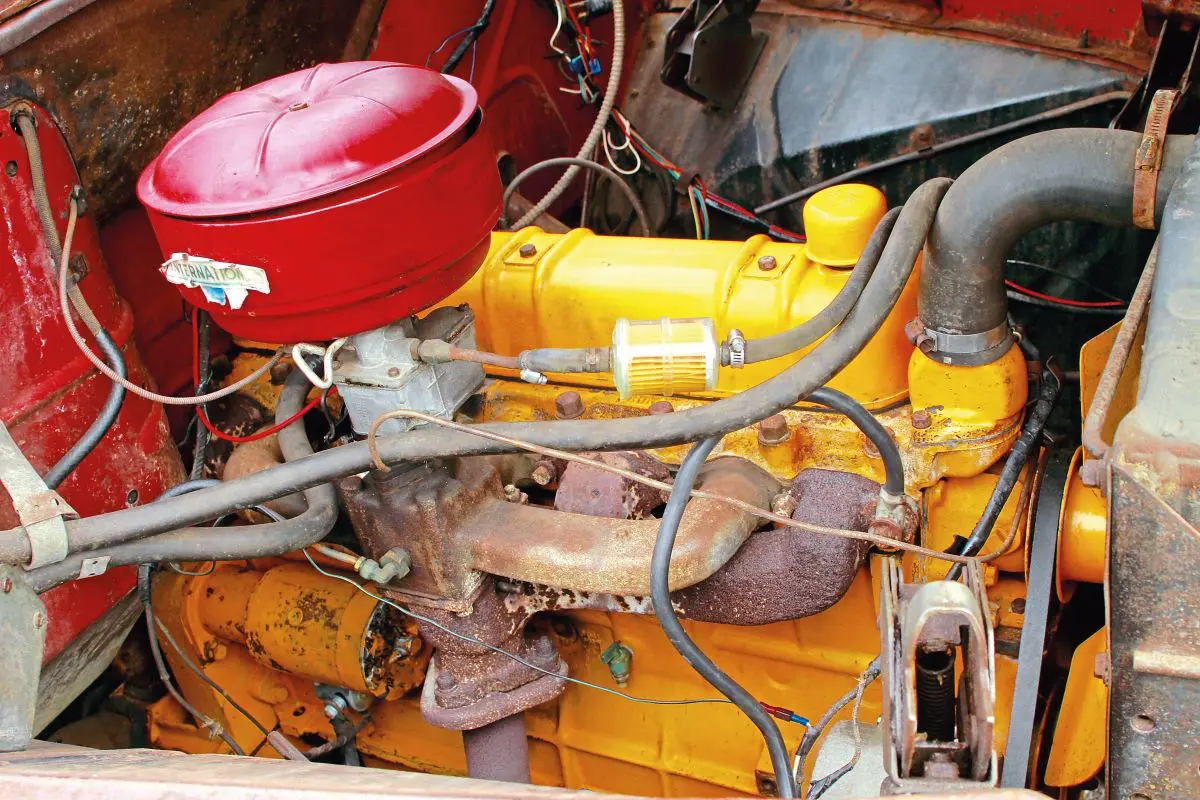
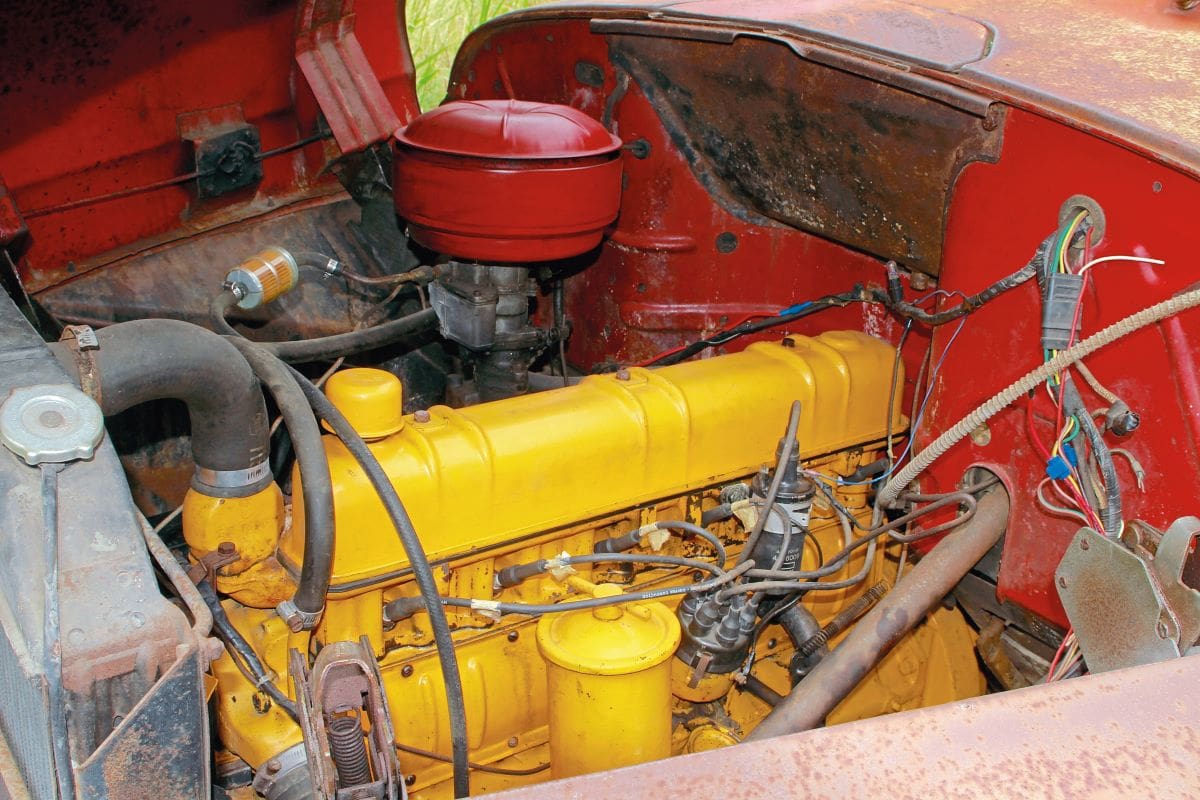
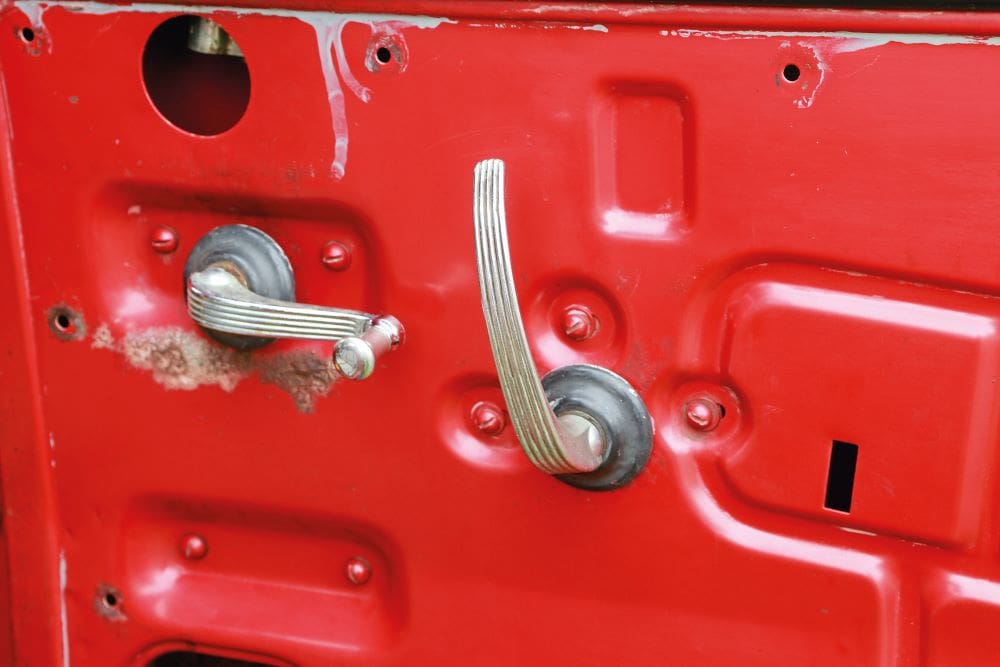
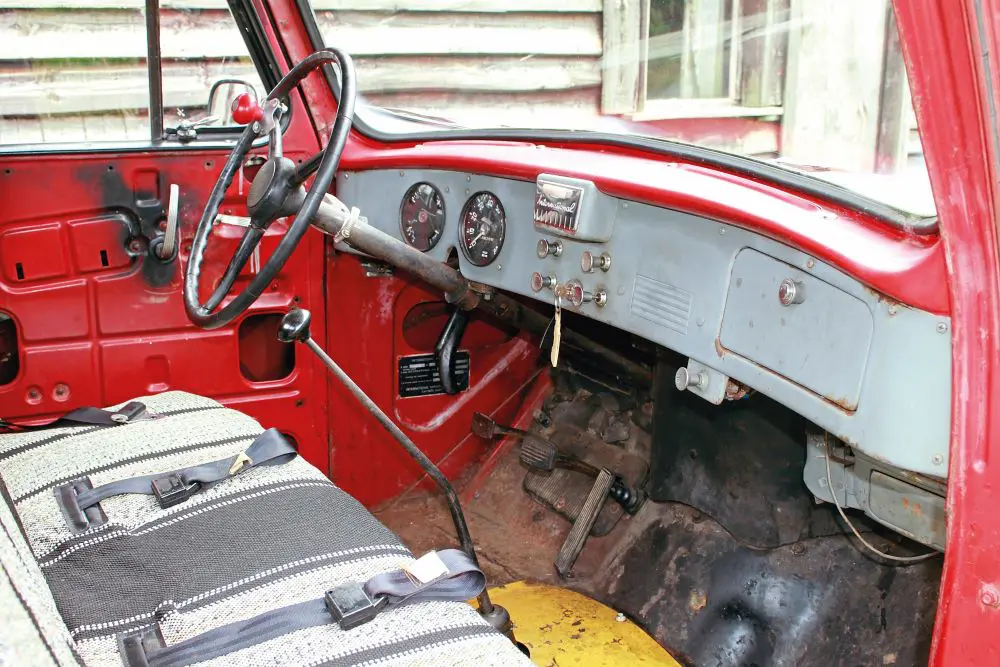
He settled on this particular pick-up because its condition was just right. The combination of surface rust and faded paint, albeit on a very solid vehicle, gives it the sort of character that can’t be simulated, while mechanically it was in excellent running and driving condition, with its original, matching-numbers engine and a mileage of 79,000, believed to be genuine. The fact that the engine and gearbox appeared to wear a fairly recent coat of paint was also in its favour, since it suggested they’d recently been overhauled.
Unfortunately, the operation of the truck was not sufficiently obvious to the American dock worker who, Paul believes, broke its universal joint. That caused a major headache because the arrangements with the shipping company stipulated that it had to be driven away from Liverpool – if it was a non-runner, it would have to go to Southampton. “All of a sudden they called me and said, ‘The vehicle’s broken, we’ll have to ship it somewhere else.’”
After a lot of wrangling, Paul persuaded them to stick to the original plan and ship to Liverpool, but there was no chance of driving it home. “What probably happened was a docker put it in first, set off too sharply and sheared the universal joint on the prop-shaft. I’m a mechanic by profession and could see it was a fresh break with clean metal inside, it wasn’t rusty.”
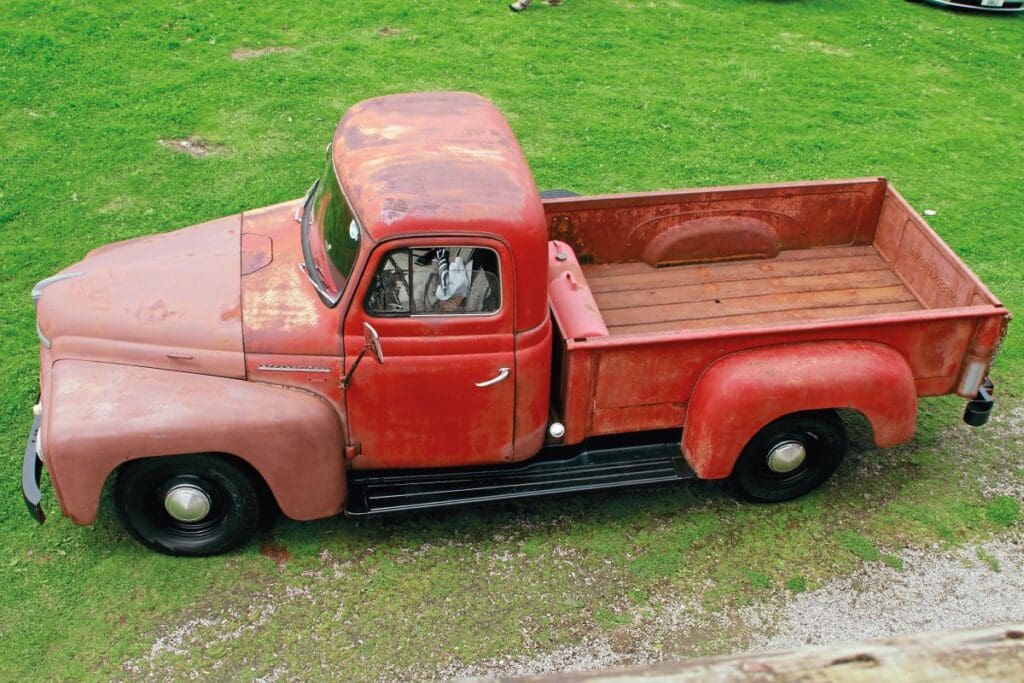
10 years and counting!
All that was 10 years ago, and since it’s been repaired, the International has hardly missed a beat, though it kept Paul occupied with a few odd jobs while it was still new to him: “I had to repair the prop-shaft myself. The handbrake is a drum that stops the prop-shaft turning, just behind the clutch, so I had to strip all that off to remove the prop-shaft. I don’t think I even attempted to run it until I’d done that, then it fired up, no bother – the engine was really nice. I repaired the door locks. They weren’t working, basically from lack of use, so I stripped them down and lubricated them and they work fine now. I had to look at the vacuum wipers and get them working, but they’re not the most reliable things anyway.”
While Paul was no stranger to American classics at the time he purchased the International, it was unlike anything he was used to. Although his father had owned some Forties cars, it was the oldest vehicle he’d ever owned himself and he had to accustom himself to a slower pace of life. “It’s the type of vehicle I feel comfortable taking to local events, because it’s low-geared and with it being such an agricultural thing, it’s not something you’d take on the motorway. It’s happy at 40mph because that’s how it was supposed to be used. I’m not saying it wouldn’t go faster, but it’s not a 70mph machine. I’m in Blackpool and I’m sure it would be appreciated at the Stars & Stripes at Tatton Park, but that’s an hour from me in a normal car on the motorway, and this would take a lot longer. It’s 73 years old now so you’ve got to treat it with respect.
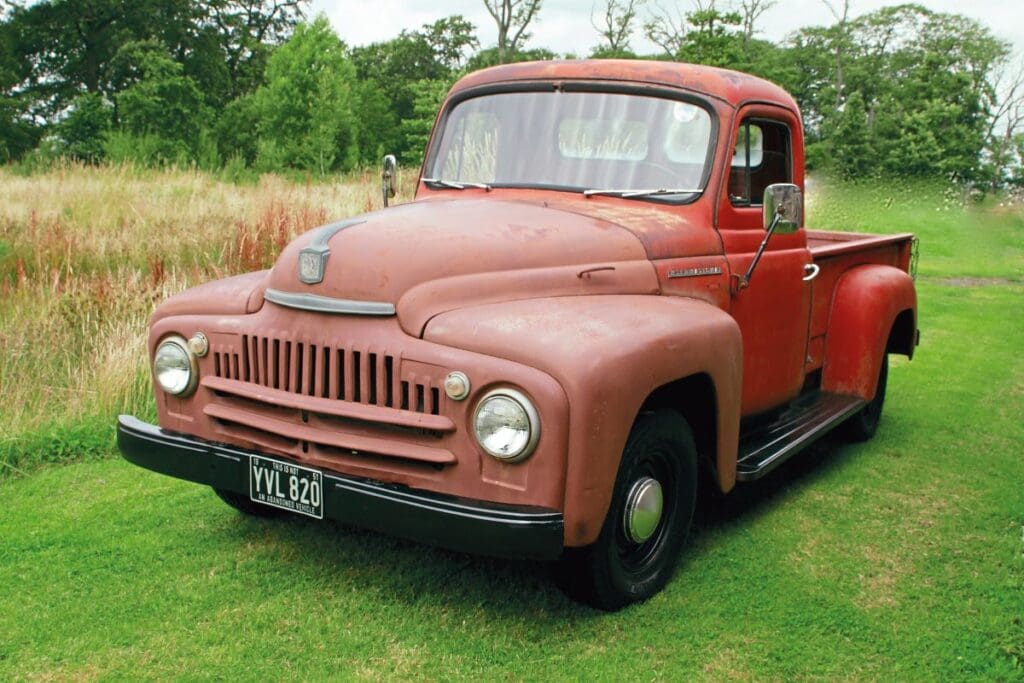
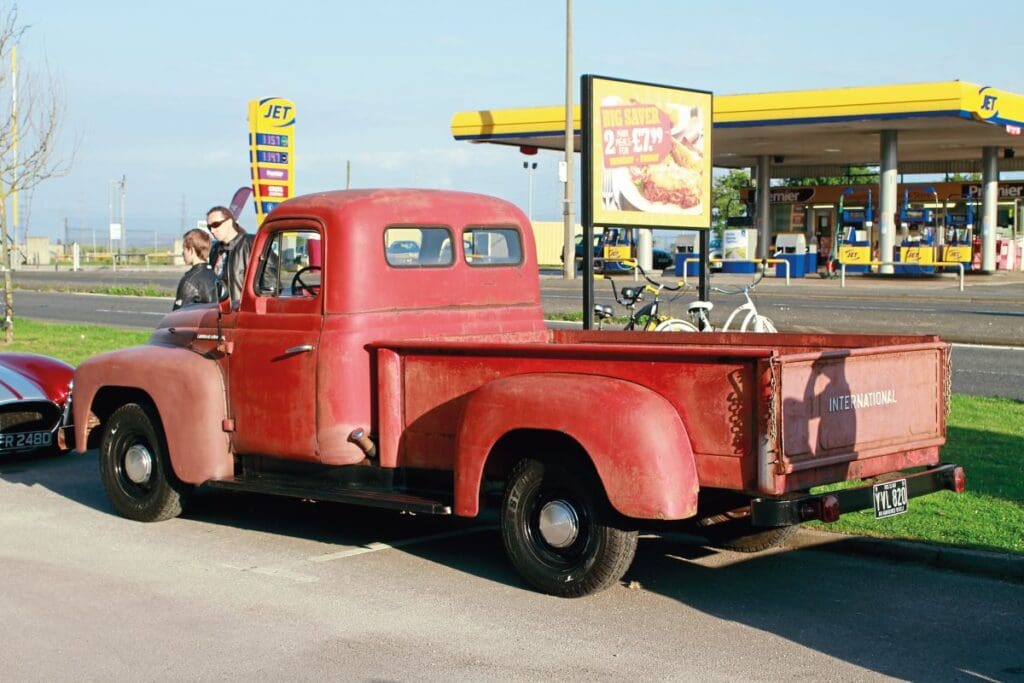
“I could use it whenever I wanted. I even used it a few years ago in a gala procession on a hot day and didn’t have a bit of trouble. It was idling slowly in a procession for over an hour and it didn’t get a bit hot. It’s got very low gears because International Harvester was mainly catering for agricultural buyers. You never use first because it’s so low, unless you want to climb a one-in-six hill, or something like that. Otherwise, as soon as you set off you’d be changing gear. The brakes are very good, the steering is very stiff, and the gearbox is nice. If you were to use it frequently, I’m sure you’d get used to its limitations and capabilities. It drives like it should – like an old truck!”
Parts availability is a likely shortcoming, but when Paul’s needed bits he’s managed to find them. “There are one or two brilliant forums for people interested in Internationals, who are old-school and know the trucks, even down to part numbers. Like anything, you have to find the right source of information. For the universal joints I replaced, I found out that ones used by Ford were the same size, so I ordered a pair and they fitted perfectly. One other thing I had to source was a new starter motor. That took a fair amount of searching, but I found an International specialist in the States in the end. He sent me a brand-new starter, not a rebuilt one. What vehicle it came from I don’t know, but he knew it would fit and work and it does.”
The International has been a faithful friend to Paul, but after enjoying it for 10 years he’s decided it might be time to move it on, since he’s got other cars which are more in need of time, money and attention. It’ll be a shame to wave goodbye, but it’ll give someone else the chance to enjoy one of the rarest of the Fifties pick-ups. The paint may be faded and the styling may be plain, but as a strong, dependable workhorse, there can be few equals even among hundreds of much showier trucks.
